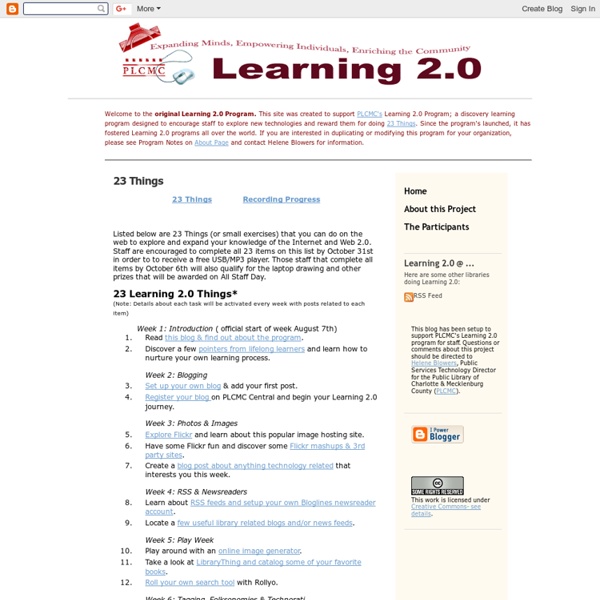



http://plcmcl2-things.blogspot.com/
Partners Europeana partners Europeana could not exist or continue to develop without the help and support of its many partners. The Europeana Network consists of thousands of organisations and institutions from all domains across Europe, from small cultural institutions to large national aggregators, and from data providers to technology solutions. Partners join the Europeana Network for a range of reasons, the key one being knowledge sharing. FREE website monitoring by mon.itor.us Here's what our monitoring tools can do for IT Consultants, ISPs, ISVs, Web Developers and Web Designers Imagine how much you could grow your business if you weren't chained to your desk. Monitor.Us makes this possible. Because Monitor.Us is Cloud-based it not only lets you keep an eagle eye on everything, from anywhere; it also takes complex set-ups, installs, updates, reinstalls and server monitoring... and drops them from a very large height. So you can spend your time growing your business rather than simply managing it. After all, there is no faster or easier way to improve your revenue and expand your client list.
» Social media and its impact on workplace learning OR how the Smart Worker works and learns Learning in the Social Workplace Social media is affecting all our lives – it has disrupted countries and it is unsettling organisations. Although more and more people are now using the term “social learning” to mean the use of social media for learning, most of them are simply referring to how social media can be used within formal, social learning/training – whereas this is only a small part of the picture. The more powerful part is how social media is being used to enhance informal social learning. But even this fact I don’t believe clearly highlights how social media is now fundamentally changing the way many people – those I called Smart Workers – are now working and learning – and how this is opening up a new era of workplace learnng.
Introducing Linked Data And The Semantic Web Next: Introducing Graph Data What is Linked Data and the Semantic Web and what is all the hype about? Principally, the Semantic Web is a Web 3.0 web technology - a way of linking data between systems or entities that allows for rich, self-describing interrelations of data available across the globe on the web. In essence, it marks a shift in thinking from publishing data in human readable HTML documents to machine readable documents. That means that machines can do a little more of the thinking work for us.
What Is Web 2.0 by Tim O'Reilly 09/30/2005 Oct. 2009: Tim O'Reilly and John Battelle answer the question of "What's next for Web 2.0?" in Web Squared: Web 2.0 Five Years On. The bursting of the dot-com bubble in the fall of 2001 marked a turning point for the web. Many people concluded that the web was overhyped, when in fact bubbles and consequent shakeouts appear to be a common feature of all technological revolutions. Shakeouts typically mark the point at which an ascendant technology is ready to take its place at center stage.
DCMI Metadata Terms Table of Contents Index of Terms Section 1: Introduction and Definitions 250+ Tools and Resources For Coding the Web HOT STORY: Google Reader Stats are Bullshit (With Proof) We're all living on the web, and we all seem to be starting our own websites, so it's time we all learned the languages that make it run. We've gathered over 250 resources to help you get going. This list is aggregated from previous Mashable posts. AJAX Activity Indicators - A large collection of animated GIFs for you to use as your AJAX application's progress indicator. AJAX For N00bs - Just as the site name implies, a site to help people just beginning to learn AJAX.
RBMS Bibliographic Standards Committee Resources for the Rare Materials Cataloger General Cataloging Sites Rare Book Cataloging Sites and Resources Library of Congress Lists Reference Sites--General -- Language Resources -- Biography Sites -- Place Names -- Calendars and Computus StoryTools 50 Web 2.0 Ways to Tell a Story (return) Note! 50+ Ways is no longer being updated here but over at the new site for 50+ Web 2.0 Ways to Tell a Story-- It has more organizational features and includes ways for you to add content to the site once you join the new wiki. Manual <div style="text-align: center;"><p><b>RBMS</b></p><p><b>Attention:</b> Your web browser currently has JavaScript disabled or does not support JavaScript,<br/> so this website will NOT function and/or display as intended.</p><p>Please enable Javascript in your browser preferences, or consider using the latest version of <br/><a href=" target="_new">Firefox</a>, <a href=" target="_new">Mozilla</a>, <a href=" target="_new">Netscape</a>, <a href=" target="_new">Internet Explorer</a>, or <a href=" target="_new">Safari</a>.</p></div> Search the RBMS website: Home >> About RBMS >> RBMS Manual Contents
3 Kinds of Value in Networks** In my work with social network development, we're talking about 3 kinds of value people bring to their networks, that shape the quality of their connections. Asset value is talent and resources. Positional value is awareness of the network and access to assets. Generative value is the ability and willingness to engage strengths in trust building and collaboration. Strong networks not only have people who bring each of these kinds of value, they have people who bring 2 or 3 kinds of value.
Your Old Books Anyone with an interest in translations of Your Old Books into other languages should contact the current chair of the RBMS Publications Committee. Your Old Books is also available as a compact PDF version. RBMS Publications Committee (Revision 2011)